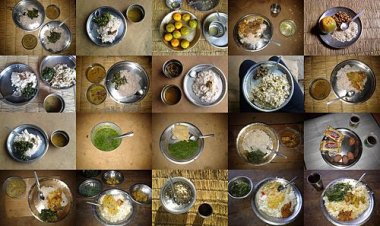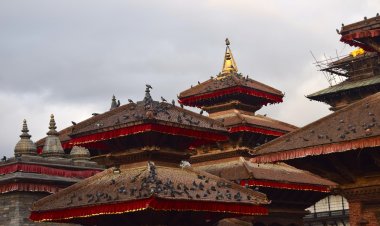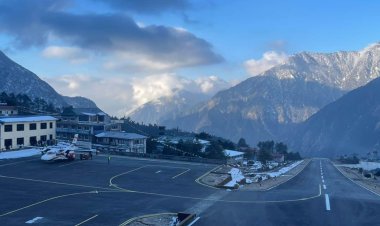Ethnic Diversity in Nepal: A Glimpse of Census 2078 and Data-Driven Analysis
Unveiling Nepal's diverse cultural tapestry: Census 2078 highlights Chhetris, Pahade Brahmins, Newars, Magars, Tharus, Tamangs, and Rais across districts.
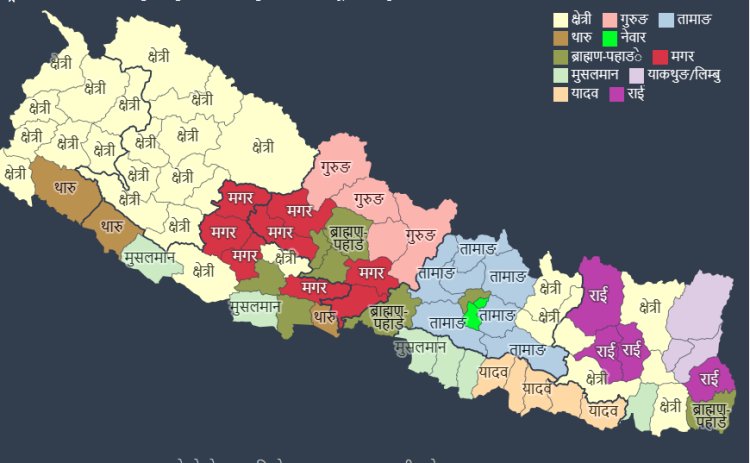
The census which is held every 10 years was done in Nepal in 2078. But its report was made public only in March 2079. At that time, there were no statistics on caste, language and religion. It took some time to make it public. On June 19, 2080, we finally got to see its statistics.
There is a difference between looking at plain data and seeing it analyzed in various ways on charts and maps. But doing that alone takes a lot of time. Meanwhile, CMR Nepal-Journalism Academy's Data Driven Journalism workshop was held. The content of this blog was prepared after the participants of that workshop helped in the analysis.
What the statistics show is that Nepal is truly a multi-ethnic, multilingual country. Apart from a few districts in the Far West, majority of Nepal's districts do not have a single ethnic group. Truly, our country is like "hundreds of flowers, we, one garland Nepali". However, this picture was seen when calculating the percentage of which ethnic group is more prominent in which district and placing it on the map.
Chhetri: Total number and prevalence in many districts
In terms of total number in the census, Chhetris are the most while Pahade Brahmins are second in number. Chhetri constitute 16.45 percent of the total population while Pahade Brahmins constitute 11.29 percent. Balla Magar (6.9 percent) and Tharu (6.2 percent) are in third place.
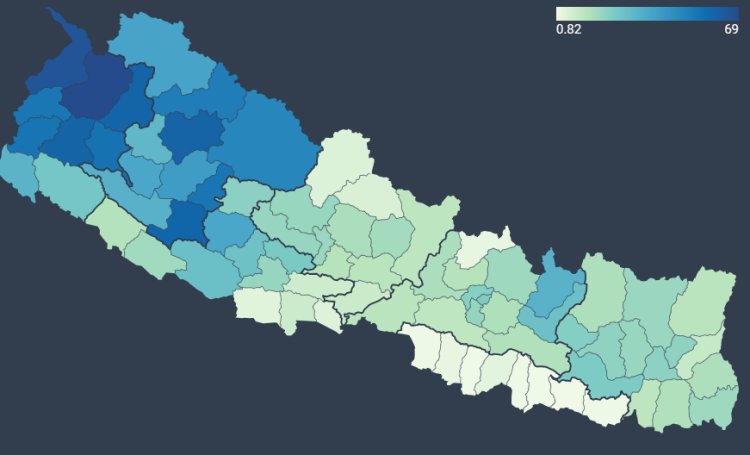
The majority of hill Brahmins in 8 districts including Kathmandu
Interesting statistics are from Kathmandu. There is a large number of Pahade Brahmins in Kathmandu district.
There are mainly three ethnic groups in the Kathmandu district - the most numerous are the hill Brahmins, and the second are the Kshatriyas. Their number is 20.78 percent. In third place are Newar (Newar) with 19.16 percent.
Among the three districts of the valley, the number of Newars is more in Lalitpur and Bhaktapur.
Interesting statistics are from Kathmandu. There is a large number of Pahade Brahmins in Kathmandu district.
There are mainly three ethnic groups in the Kathmandu district - the most numerous are the hill Brahmins, and the second are the Kshatriyas. Their number is 20.78 percent. In third place are Newar (Newar) with 19.16 percent.
Among the three districts of the valley, the number of Newars is more in Lalitpur and Bhaktapur.
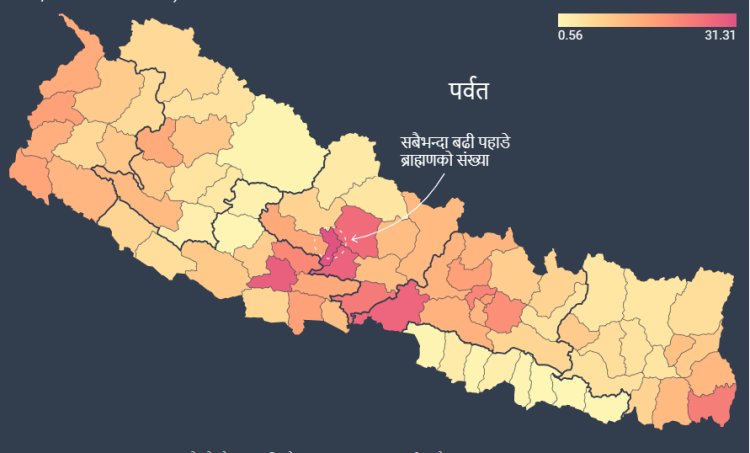
Magar: Majority in 8 districts
The number of Magars, who are the third of the total population in Nepal, is high in 8 districts. Even in Palpa, the number of alligators is more than half (53.03 percent). Rukum East also has almost half (49.44 percent).
Apart from that, in Rolpa, Myagdi, Pyuthan, Baglung, Nawalparasi (East) and Tanahun, Magars are the majority than other ethnic groups, while in Gulmi Magars are second in number to Chhetri with only a small number. There are 22.77 percent of Chhetri and 22.28 percent of Magar. Look at the map-
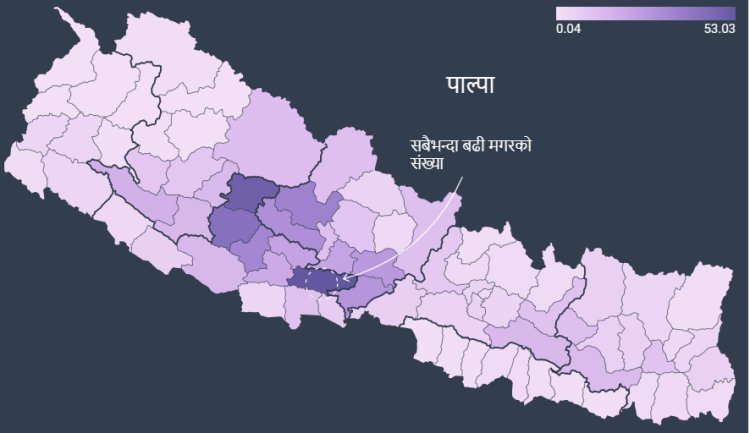
Tharu: Majority in three districts
The majority of Tharus is seen in three districts. Among them, the number of Tharus in Bardia is more than half (50.66 percent). Similarly, in Kailali and Nawalparasi West, their number is more than other ethnic groups, while in Dang, the number of Tharu is less than Chhetri. There are Chhetri 26.65 percent and Tharu 26.43 percent.
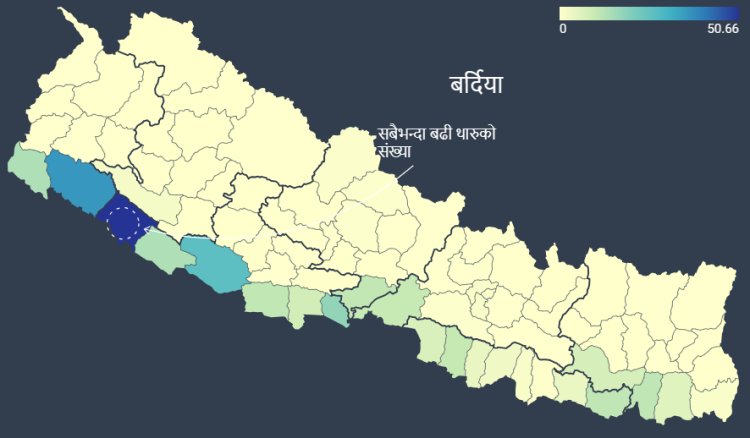
Tamang: Majority in 6 districts
Similarly, there is a majority of Tamangs in 6 districts. Among them, the number of Tamang in Rasuwa is more than half (68.81 %). Makwanpur, Nuwakot, Kavrepalanchok, Sindhuli and Dhading are such districts where the number of Tamang is more than other ethnic groups.
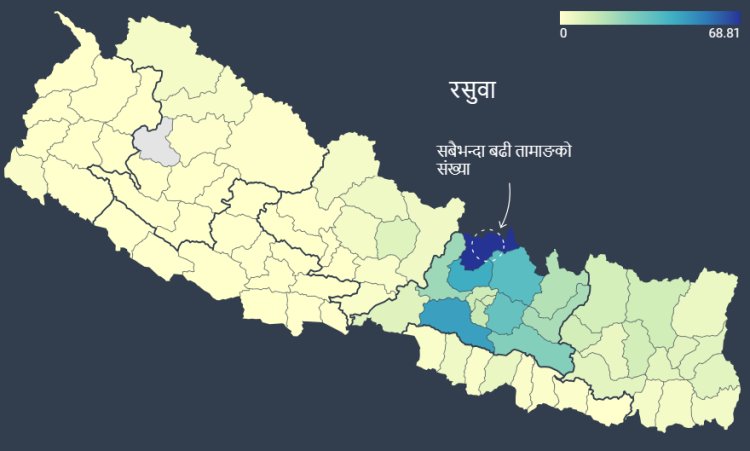
Predominant in Rai 4, Yakthung/Limbu 3 districts
Rais outnumber other ethnic groups in Khotang, Bhojpur, Eelam and Solukhumbu. In Solukhumbu Rai outnumbers Sherpas by a small margin. There are Rai 17.37 percent and Sherpa 17.05 percent.
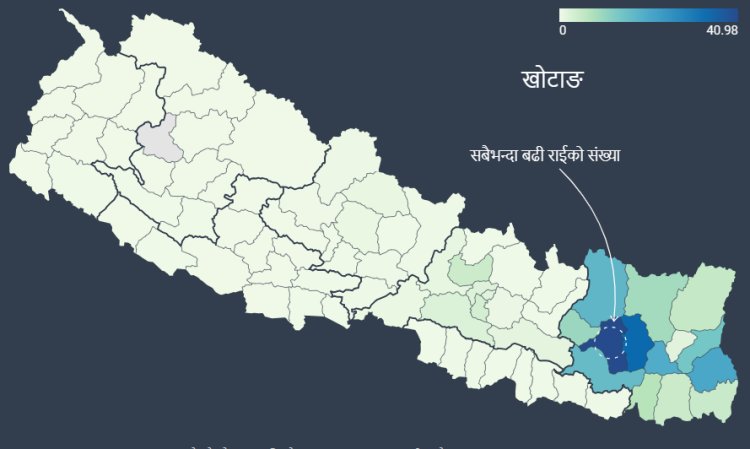
What's Your Reaction?

























































































